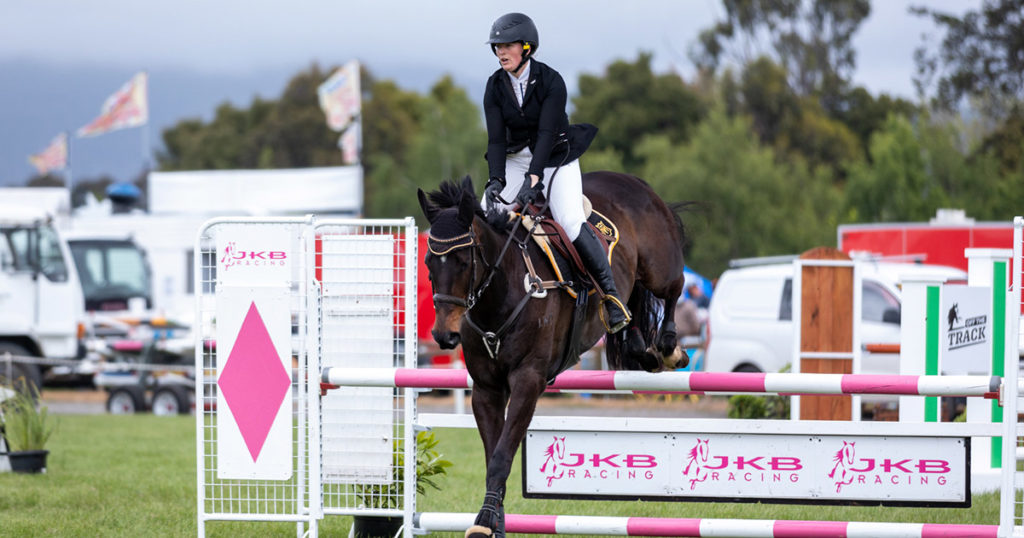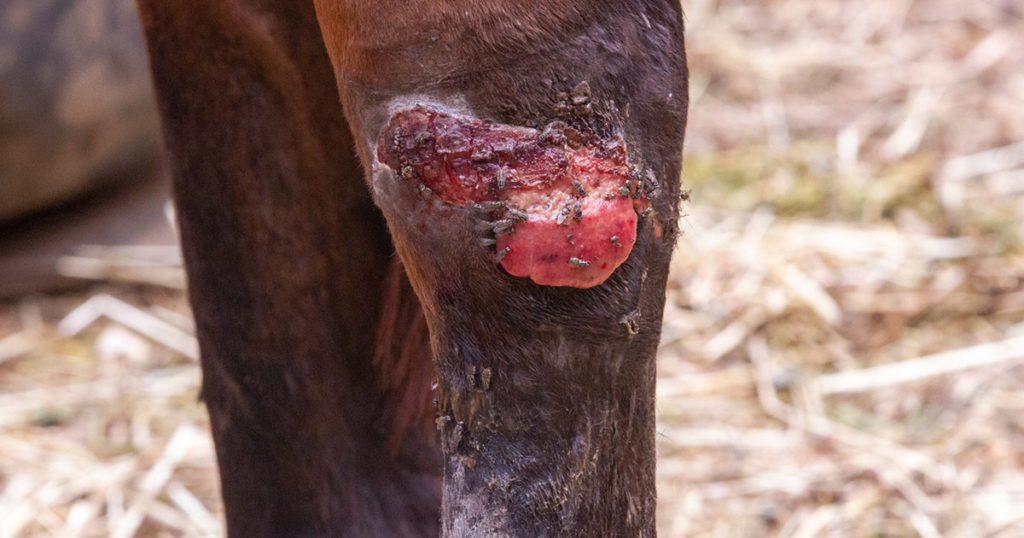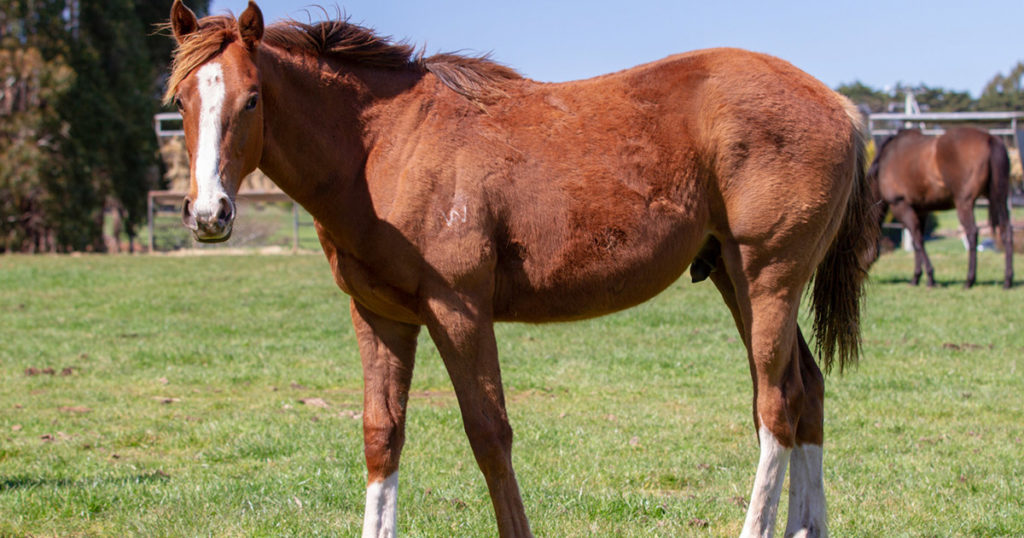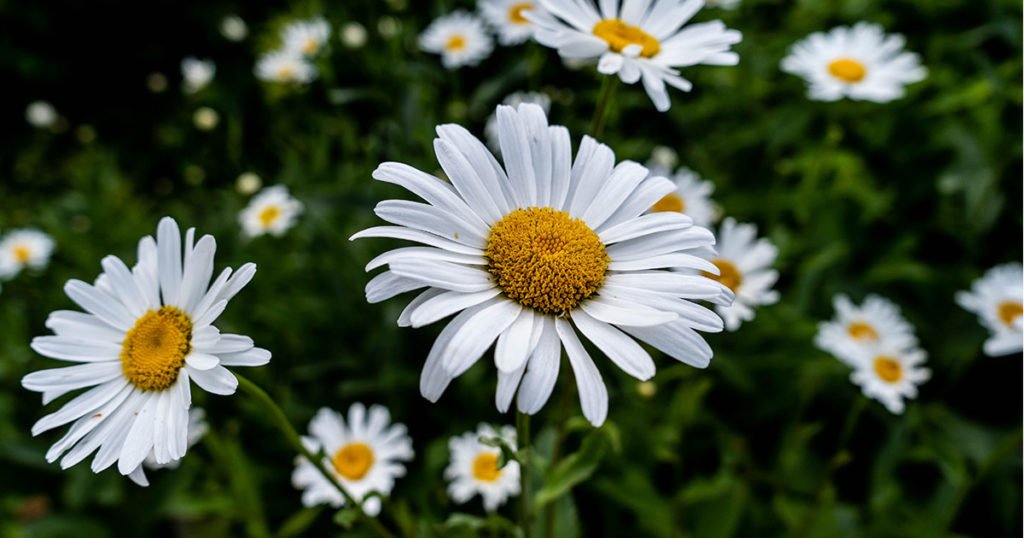Among the many breeds and types of horses available to riders, off the track thoroughbreds (OTTB) are a highly popular choice of mount. And for a very good reason! Their versatility, intelligence, athleticism and scope make them well-suited to many different equestrian pursuits.
For the owner or rider considering taking on an OTTB, careful thought and planning should go into ensuring that the transition from the life of a racehorse to the next phase of the horse’s career is as smooth as possible. Some of the biggest considerations need to be given to changes in the horse’s diet, routine and optimising health parameters. Equipping yourself with knowledge and enlisting the help of suitably qualified professionals can help to realise your horse’s full potential.
Goals and Capabilities as a Rider/Handler
Before even inspecting an OTTB for potential purchase, clearly know what you are wanting in your new horse and your capabilities as a rider. Are you looking for a future show hack with impeccable conformation and looks? Are you looking for a pony club mount that needs to be calm and versatile? Are you looking for a horse with the potential to be a top-class eventer, thereby needing to be very sound, athletic and able to withstand high levels of training? Are you looking to get a cheap yet athletic horse to re-educate and sell on? Knowing the answers to these questions will quickly help to narrow down the horses you inspect for potential purchase and look to undertake a pre-purchase veterinary examination. By clearly knowing your goals, you can save yourself a lot of time and money and are far more likely to choose the most suitable horse.
When taking on an OTTB (particularly one that has come straight from a racing stable environment), honestly assessing your capabilities as a rider is critical. Are you confident and competent enough to safely and effectively manage and deal with an anxious, highly geared horse (whose temperament may or may not change significantly whilst in your care)? Or are you better suited to taking on a more relaxed OTTB or even one that has been off the track for some time and has spent time being re-educated with a different owner? One of the many beauties of OTTBs is that there are so many to choose from and at many different life and career stages- you are bound to find one that suits you perfectly! Be patient and choose wisely.
Vet Check
One of the first things to consider (and often most overlooked) when purchasing an OTTB is getting a thorough vet examination prior to purchase. Musculoskeletal soundness and airway health are two of the most significant considerations. Just like human athletes, racehorses’ bodies are put under strenuous physical demands, with the potential to develop injuries. Due to the hard galloping done by many young horses in training, considerable stress is put on bones, tendons and ligaments. This can lead to soundness issues. A thorough vet examination can help to identify previous injuries or any potential issues which may influence the ability of the horse to be suitable for its intended next career. On radiographic screening (x-ray), many racehorses will have some degree of osteoarthritic changes in their joints. With planning, sound dietary practices and the strategic use of appropriate supplements and management interventions, many of these conditions can be well managed. Furthermore, the fact that many OTTBs transition into their next careers at a relatively young age is advantageous. From a physiological perspective, when given suitable nutrition and support, their body is better able to repair and regenerate than an older horse. Referring back to your goals and what you intend to do with your OTTB is an important consideration here. A past injury in a racehorse which may prevent it from high-level eventing may pose no issues for a horse intended for general pleasure riding.
Suboptimal hoof health is a common finding in the newly transitioning OTTB. This is often due to a combination of poor gastrointestinal (GIT) health (which influences nutrient absorption and the production of essential vitamins such as biotin needed for sound, healthy hooves). For more information on the role of GIT in overall health and the role of nutrition in hoof health see articles: Fibre, Chewing and Gastrointestinal Health; Ulcers in Horses: The importance of understanding how medications work; Hay, Stomach (Gastric) & Hindgut (Colonic) Ulcers; and Beyond Biotin: Optimising Horse Hoof Health.
Routinely being shod in race plates can also compound the problem of poor hoof structure and health. Many racehorses have contracted hooves with under-run heels, long toes and thin soles. Encouragingly, hoof health is an aspect that can readily be turned around in a period of around 8-12 months with appropriate dietary changes and good farriery. Including radiographs of the hooves as part of the pre-purchase examination may be a valuable investment in some horses: x-rays can help to demonstrate what is going on in the hoof and can aid the proactive farrier to trim, shoe and manage the hoof appropriately.
It is important to remember that often racehorses in training will initially go footsore when their shoes are removed and they are left barefoot during a spell. This is especially true of the front feet. Some farriers and owners will choose to keep their horses in shoes. In many cases however, it is advisable for the spelling horse to have an extended period of time being unshod: this helps to positively influence hoof shape and integrity and aids in proper circulation and blood flow to the hooves. Feeding the horse a diet which reduces inflammation, using nutritional supplements (nutraceuticals) and herbal medicine under qualified supervision, and potentially easing the transition to barefoot through the use of padded, removable boots are all beneficial strategies.
Another aspect of the pre-purchase examination should also include an upper airway scope. Respiratory conditions which may be evident when assessing an OTTB include a history of exercise-induced pulmonary haemorrhage (EIPH, more commonly known as bleeding), airway inflammatory disease, and laryngeal hemiplegia (roaring). The first two can generally be well managed with appropriate feeding and supplementation practices and adopting strategies to minimise the inhalation of air particulate matter and dust.
History
Where possible, finding out as much history about the horse as possible can help to make a smooth transition to the next phase of its career. For a horse coming straight off the track, contact with the trainer and/or stable manager can help provide you with valuable information as to any health or injury concerns with the horse, the dates it was last vaccinated and drenched (de-wormed), any medications and/or supplements it may have been receiving, its current diet and any quirks, habits or temperament considerations to take into account. Having said this, it is also important to remember that when a horse is put in a new environment, some of the aforementioned things may change! For example, a horse that was previously often irritable can become much calmer with a more natural diet and living environment. Similarly, horses which may have been very picky eaters whilst in training often become very good eaters once their GIT health has improved and the stress of the training environment has been removed.
Diet
The majority of diets fed to thoroughbreds in training are not conducive to optimal GIT health and function. Practices vary between trainers and stables, but most often, horses in training are fed two or three large grain and/or concentrate-based meals per day. Grass and/or lucerne hay are often provided in limited amounts. Many trainers do not have the luxury of turning horses out to graze. This puts the horse’s digestive system under strain and increases the likelihood of many health issues including ulceration throughout the GIT (gastric and colonic ulcers), colic, disturbances in the GIT microflora (bacterial balance of the digestive system), hindgut acidosis, suboptimal ability to utilise feed properly and nutritional deficiencies/insufficiencies. The addition of high cortisol levels produced by the horse in response to stress and high-intensity exercise further compromises GIT health and digestive function. To read more about the contributors and effects of stress in our horses see: Stress in Horses: Why it isn’t always obvious.
Horses, by nature, are designed to be constantly moving about and grazing high-fibre roughage. This is important as the stomach of the horse is relatively small in volume and has little capacity to expand. As a result, small amounts of feed which are consumed often are digested much better than the large volume feeds given a couple of times per day. The constant grazing a horse does in its natural environment also ensures that there is a physical buffer in the stomach to protect against the breakdown action of hydrochloric acid and digestive enzymes. These substances are constantly produced in the horse and are essential for proper digestion, as well as immune function. To read more, visit: Ulcers in Horses: The importance of understanding how medications work. Grazing and chewing also stimulate the production of saliva. Saliva serves many important functions in the horse, including releasing bicarbonate ions into the stomach (which also protects the stomach lining, another smart natural mechanism of the horse to protect against ulcers). To learn more about the benefits of grazing, visit: Why Basics Matter: The Importance of Chewing.
Sudden changes in feeding practices (even those that are beneficial to the horse) can increase the risk of colic and other complications. This is thought to be largely attributed to rapid changes in GIT microflora in response to the feed offered. Finding out the horse’s current diet prior to purchasing can help to make smooth transitions to a more fibre-rich feed, whilst ensuring the gut microflora change at an appropriate rate. It is advisable to make the transition of feeds gradual (over a period of 12-14 days) to help best facilitate this.
Whilst horses who come directly out of training will have been maintained on high-energy rations, their relative energy needs during their initial transition into an OTTB will be much lower. Furthermore, if GIT health is optimised as part of their transition (through feeding, management practices and appropriate supplementation), they will be better able to use fibre rich feeds (ie pasture and hay) as energy sources. This is made possible through bacterial fermentation in the hind gut (helpful microbes in the large intestine break fibre down into short-chain/volatile fatty acids, a high source of energy for the horse). It is important to remember that whilst a horse’s actual energy needs may be much lower than when they were in training, their need for specific minerals, vitamins and protein may remain relatively high. Without the excess demands of training and racing the body is in a prime position to help address and heal any niggling injuries, musculoskeletal damage or immune health challenges. To find out more about nutrient requirements and the role of protein for horses visit Nutrient Requirements for Horses: Fortified Feeds and the need for Supplementation; The Importance of Protein. These are commonplace in any athlete involved in demanding sports. To facilitate optimal healing and health, is essential to ensure that the OTTB receives at a minimum the recommended dietary intake of minerals and vitamins, in addition to good quality protein sources. A good quality balancer feed or supplement, in the addition to sufficient pasture, hay and lucerne hay (where appropriate) will help to meet these needs.
Some people find challenges in putting condition on their OTTB and/or the horse being picky with their feed. This is most often due to irritation of GIT, use of ulcer medications and non-steroidal anti-inflammatories (NSAIDs) such as ‘bute’ (PBZ), and the diet racehorses are commonly maintained on,. These factors can all significantly compromise gut integrity and health. Add to this the stress of a new environment and the change in the horse’s routine and it can take a little time for the horse to adjust. Whilst the prescription of appropriate nutritional and herbal supplementation can help immensely in these cases, basic management practices including turning the horse out to graze, the provision of sufficient roughage (hay, pasture), and keeping the OTTB with a sensible paddock mate are all effective starting points owners are encouraged to implement. One of the most common mistakes that can be made when wanting to put weight on a newly acquired OTTB is to continually increase the ration of grain or high-energy concentrate feed, without the provision of sufficient roughage and fibre. This contributes to additional compromises in the integrity of the GIT lining and further shifting the hindgut microflora away from that which promotes the best utilisation of feed and energy. As a result, the cycle of struggling to gain weight is perpetuated, and often leads to frustration as the horse seems to take an extended period of time to ‘let down’ and gain condition. To read more about horse’s who struggle to put on condition, visit the article: HELP! My horse won’t put on body condition.
Down Time
One of the best things you can do as an owner of a newly transitioning OTTB is give it some much needed ‘down time’. The majority of racing stable environments are far removed from what is a natural for the horse. Like humans constantly under work deadlines, family demands and everyday pressures, horses too routinely experience stress. This stress is manifested in many forms, primarily driven by changes in levels of the stress hormone cortisol (which can lead to reduced immune function, high levels of inflammation, changes in temperament and behaviour, and reduced capacity to recover). Additionally, the constant physical demands of training and racing can lead to ongoing musculoskeletal ‘niggles’- aches, pains and minor injuries. A period of 4-8 weeks, turned out in the paddock, fed a fibre-rich diet, and not in the demands of work or being fussed with is one of the most beneficial things you can do to help the newly transitioned OTTB. It helps the horse to mentally wind-down, aids in the restoration of GIT health, gives any small niggles the chance to heal, and lets the horse settle into a new environment and freshen up. Just like humans, horses too need holidays. Simply giving them time out before asking new demands from them in their new career, can help them get off to the best start.
Temperament
A significant (and often highly variable and unpredictable) consideration in the OTTB is temperament. This can be a challenge when acquiring a new horse, as it is difficult to know exactly how much is ingrained behaviour and the horse’s natural tendency, compared to how much it is a result of the environment the horse has been in, the feeding practices and GIT health. An important consideration to note is that 70-80% of the neurotransmitters (the chemicals which influence mood, temperament, behaviour and learning) are produced in the GIT. There are clear links between GIT health and levels of anxiety, mood changes and behaviour. This is useful to take into account: an OTTB which has struggled with compromised gut health in training and may be nervous, edgy or readily spook can change significantly when GIT health is addressed. A combination of appropriate supplementation and feeding, combined with appropriate ‘down time’ can really significantly impact the behaviour of an OTTB for the better. It routinely plays a role in why many horses that are temperamental/nervy/anxious in training become more relaxed away from the stable environment. Keep in mind too, that the actual environment the horse is kept in also plays an important role.
Monitoring and Progress
From a basic health standpoint, once the new OTTB has arrived and settled, it is wise to measure temperature, respiratory and heart rates at roughly the same time each day for a week to establish what is ‘normal’ for your horse. Record these and keep on hand (using the notes section on your mobile phone can be great, otherwise written on a whiteboard or somewhere easily accessible). This information is incredibly helpful in the instance that your horse may become unwell: you know what is ‘normal’ and healthy for your horse, helping to implement appropriate strategies in a timely fashion.
Taking photos of your horse from the side and back (safely), on a fortnightly or monthly basis is a simple tool to monitor body composition changes and progress. The same thing can be done with their hooves front and side-on, in addition to picking the hoof up and taking pictures of the sole and frog. It can be incredibly rewarding to look back over a 4-6 week period and notice the subtle improvement in body condition. Horses can make significant progress in gradual increments, which may be missed when you are seeing the horse on a daily basis. By having photo evidence on hand, you are able to make a more objective assessment. Keep in mind that changes in hoof shape and quality will be much slower to notice: front hooves take a full 8-12 months to grow from the coronary band to the toe.
The majority of horses in training are maintained on a routine drenching (deworming) schedule. Given our current state of understanding in relation to resistance to worming products, it makes sense to adopt a strategic drenching approach. In order to implement this safely and effectively, taking routine faecal samples to be sent off for testing are encouraged. Doing this at the commencement of ownership can help to provide guidance to the most effective drenching requirements of your horse. For more information on drenching/deworming visit the article Drenching/Deworming with Panacur.
Conclusion
Like most worthwhile things in life, effectively transitioning a racehorse to an accomplished OTTB takes time and patience! Knowing your capabilities as a rider and having clear goals as to what you want to achieve with your new mount are important starting points. Enlisting the expertise of suitably qualified professionals and equipping yourself with the knowledge of best practices can help make for a smooth and rewarding journey. Choosing an OTTB can make for one of the most gratifying experiences as a horse owner and rider. Careful consideration, planning and attention to detail can ensure you give your horse every chance to excel in its new phase of life.
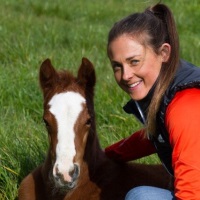
Camilla Whishaw is a highly regarded, experienced horsewoman and naturopath, helping to holistically treat and manage a broad range of equine health conditions and injuries, with a passion for mare and stallion fertility.
As a world-renowned practitioner, presenter, author, and consultant in the field of Equine Naturopathy, Camilla shares her knowledge through keynote presentations, interviews, lectures, panel sessions, and workshop training.

